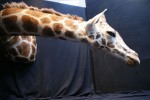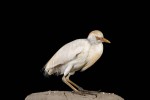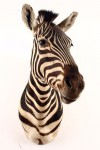Wild Turkey – Meleagris gallopavo
Wild turkey – Meleagris gallopavo
- Eastern wild turkey, M. g. silvestris
- Osceola wild turkey or Florida wild turkey, M. g. osceola
- Rio Grande wild turkey, M. g. intermedia
- Merriam’s wild turkey, M. g. merriami
- Gould’s wild turkey, M. g. mexicana
-
South Mexican wild turkey, M. g. gallopavo
The bare head is covered with a blue or purple skin. Male and female have a large wattle, red in the male, hanging under the throat and another that falls on the beak. The plumage is mostly greenish bronze part with gold and copper highlights. The feathers have black tips on the neck, chest and back. The male has a tuft of feathers on the chest called bear, down to the ground in older individuals. The legs are pinkish-purple with short and powerful pins.
The wild turkey is a large bird that lives in the mountain forests, woods and marshes of the United States. Non-breeding male and female live separately, perching high as possible in the trees. It lives on the East Coast of the United States to southern Mexico. It has many enemies, coyotes, foxes, wolves, lynxes, raptors, owls, raccoons, skunks and minks. Faced with these many predators, the bird must be very careful. This is why many turkeys sleep in trees that grow in water because they are not accessible from the ground.
Very heavy turkey is struggling to take off and has to run for a few meters to take off. Young turkeys have even more difficulties and must flit from branch to branch to sleep on top of a tree. At the time of love, it chuckles parade proudly spreading the tail feathers. The male lives on a reserve fat and eats very little. After the breeding season, the male is thin again.
The female makes its nest by scraping a small bowl in the ground, it lines the dry leaves and lays from 8 to 15 eggs, poults move with the female until the age of three months, then the large males and females form separate groups.
To feed, it scrapes the floor of the forest, turning leaves and pecking plants, berries, grass, buds, seeds, roots, insects, crustaceans, mollusks, amphibians, its digestive system is surprisingly effective.





